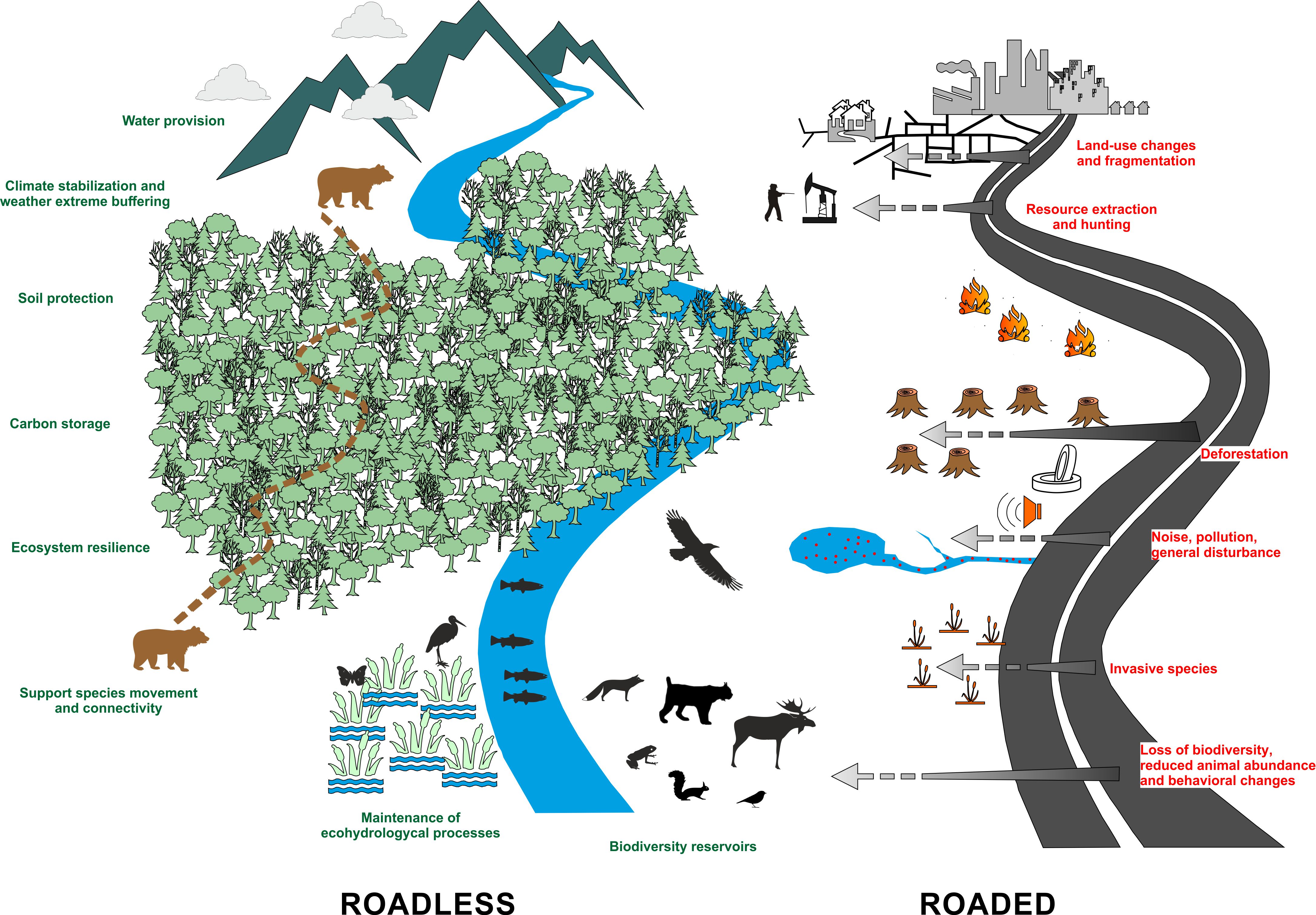Conserving roadless areas has long been a shared priority across SCB Regions, which have documented their biodiversity value
Some of the wildest, most pristine forests in the United States are under threat. In June, the U.S. Department of Agriculture announced its intent to rescind the 2001 Roadless Area Conservation Rule, a cornerstone of conservation that protects more than 58 million acres of national forest land from road-building and large-scale development.
In a formal letter to the U.S. Secretary of Agriculture, the SCB North America Region (SCBNA) warns that repealing the policy would have “devastating and irreversible consequences” for ecosystems, wildlife, and future generations. The letter underscores the overwhelming scientific evidence that intact, roadless forests are critical for:
- Reducing habitat fragmentation and protecting threatened species.
- Strengthening resilience against wildfire and climate change.
- Providing essential ecosystem services, including clean air, clean water, and carbon storage.
“These areas are vital for biodiversity, climate adaptation, and the long-term health of our forests,” the letter states, adding that the Roadless Rule remains one of the most forward-thinking conservation policies in U.S. history.
“The Roadless Rule represents a promise—that our most intact forests will remain a refuge for people, wildlife, and ecosystems. Rescinding it would break that promise to the American public," said Lauren Jonaitis, Vice President for Policy on the SCBNA Board.
A Cross-Regional Priority
The defense of roadless areas is not only a North American issue. Inspired by the U.S. Roadless Rule, the SCB Europe Region’s Policy Committee launched the Roadless Area Initiative in 2006/2007, highlighting the value of intact, undeveloped lands for biodiversity conservation at the global level, in both the scientific and policy arena. This initiative developed into a cross-regional activity that, in addition to the Europe Region, to date includes the North America Region and the Latin America and Caribbean Region. The initiative has:
- Promoted roadless conservation in international scientific and policy forums.
- Advanced cross-regional dialogue through ECCB and ICCB meetings.
- Published research on the biodiversity and climate benefits of roadless areas.
- Triggered the first roadless legislation in Europe for mountain conservation in Greece
“Banning the construction of roads in roadless mountain areas could be a simple, cost-effective way to tackle both climate and biodiversity crisis” says Vassiliki Kati, an SCB member and Greek Professor from the University of Ioannina.
Roads are one of the biggest drivers of ecosystem damage: they fragment habitat, cut migration corridors, and serve as ignition points for wildfires. Once a road is cut, a forest is never the same. This two-minute video captures this well: RoadFree – It takes just one road to destroy a forest.
Submit Your Comment
The public comment period for opposing the rollback closes September 19, 2025. Go here to learn how you can comment, or use Salmon State's website tool for submitting a comment here. SCBNA has also developed a toolkit which you can find here.

Figure: Selva N., Hoffmann M.T., Kati V., Kreft S., Ibisch P.L. (in press). Emerging topics in Road Ecology. Roadless areas. In: M. D’Amico, R. Barrientos, F. Ascensão (Eds). Road Ecology: Synthesis and Perspectives. Springer. Still in press.